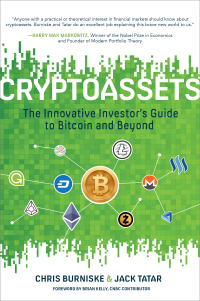

Problem 7-10 Current yield, capital gains yield, and yield to maturity Hooper Printing Inc. has bonds outstanding with 9 years left to maturity. The bonds have an 9% annual coupon rate and were issued 1 year ago at their par value of $1,000. However, due to changes in interest rates, the bond's market price has fallen to $910.30. The capital gains yield last year was - 8.97%. a. What is the yield to maturity? Round your answer to two decimal places. b. For the coming year, what is the expected current yield? (Hint: Refer to Footnote 7 for the definition of the current yield and to Table 7.1.) Round your answer to two decimal places. For the coming year, what is the expected capital gains yield? (Hint: Refer to Footnote 7 for the definition of the current yield and to Table 7.1.) Round your answer to two decimal places. C. Will the actual realized yields be equal to the expected yields if interest rates change? If not, how will they differ? I. As long as promised coupon payments are made, the current yield will change as a result of changing interest rates. However, changing rates will not cause the price to change and as a result, the realized return to investors should equal the YTM. II. As rates change they will cause the end-of-year price to change and thus the realized capital gains yield to change. As a result, the realized return to investors will differ from the YTM. III. As long as promised coupon payments are made, the current yield will change as a result of changing interest rates. However, changing rates will cause the price to change and as a result, the realized return to investors will differ from the YTM. IV. As long as promised coupon payments are made, the current yield will not change as a result of changing interest rates. However, changing rates will cause the price to change and as a result, the realized return to investors should equal the YTM. V. As long as promised coupon payments are made, the current yield will change as a result of changing interest rates. However, changing rates will cause the price to change and as a result, the realized return to investors should equal the YTM. Problem 7-15 Bond valuation Bond X is noncallable and has 20 years to maturity, a 8% annual coupon, and a $1,000 par value. Your required return on Bond X is 12%; and if you buy it, you plan to hold it for 5 years. You (and the market) have expectations that in 5 years the yield to maturity on a 15-year bond with similar risk will be 9.5%. How much should you be willing to pay for Bond X today? (Hint: You will need to know how much the bond will be worth at the end of 5 years.) Round your answer to the nearest cent. Problem 7-10 Current yield, capital gains yield, and yield to maturity Hooper Printing Inc. has bonds outstanding with 9 years left to maturity. The bonds have an 9% annual coupon rate and were issued 1 year ago at their par value of $1,000. However, due to changes in interest rates, the bond's market price has fallen to $910.30. The capital gains yield last year was - 8.97%. a. What is the yield to maturity? Round your answer to two decimal places. b. For the coming year, what is the expected current yield? (Hint: Refer to Footnote 7 for the definition of the current yield and to Table 7.1.) Round your answer to two decimal places. For the coming year, what is the expected capital gains yield? (Hint: Refer to Footnote 7 for the definition of the current yield and to Table 7.1.) Round your answer to two decimal places. C. Will the actual realized yields be equal to the expected yields if interest rates change? If not, how will they differ? I. As long as promised coupon payments are made, the current yield will change as a result of changing interest rates. However, changing rates will not cause the price to change and as a result, the realized return to investors should equal the YTM. II. As rates change they will cause the end-of-year price to change and thus the realized capital gains yield to change. As a result, the realized return to investors will differ from the YTM. III. As long as promised coupon payments are made, the current yield will change as a result of changing interest rates. However, changing rates will cause the price to change and as a result, the realized return to investors will differ from the YTM. IV. As long as promised coupon payments are made, the current yield will not change as a result of changing interest rates. However, changing rates will cause the price to change and as a result, the realized return to investors should equal the YTM. V. As long as promised coupon payments are made, the current yield will change as a result of changing interest rates. However, changing rates will cause the price to change and as a result, the realized return to investors should equal the YTM. Problem 7-15 Bond valuation Bond X is noncallable and has 20 years to maturity, a 8% annual coupon, and a $1,000 par value. Your required return on Bond X is 12%; and if you buy it, you plan to hold it for 5 years. You (and the market) have expectations that in 5 years the yield to maturity on a 15-year bond with similar risk will be 9.5%. How much should you be willing to pay for Bond X today? (Hint: You will need to know how much the bond will be worth at the end of 5 years.) Round your answer to the nearest cent








